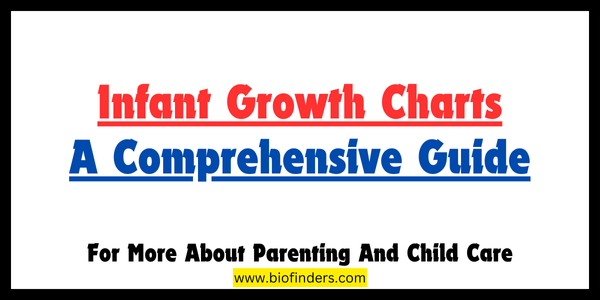Every parent wants to keep track of baby’s growth. This is where infant growth charts come in – a treasure trove of information packed into a seemingly complex grid. But fear not, new parents! This guide will break down the components of a growth chart, making it an easy-to-understand tool for monitoring your baby’s development.
What is an Infant Growth Chart?
An infant growth chart is a visual representation of how your baby’s weight, length (or height for older infants), and head circumference compare to other healthy babies of the same age and sex. These infant growth charts are developed using data from numerous healthy children, allowing you to see how your baby falls within the spectrum of typical growth patterns.
Key Components of Infant Growth Charts
1. Axes: The infant growth charts typically has two axes:
- Age: This axis is usually located at the top and bottom of the chart, showing weeks, months, or even years depending on your baby’s age.
- Measurements: The left side (or sometimes the right) axis displays measurements like weight in pounds and ounces or kilograms, length/height in inches or centimeters, and head circumference in centimeters.
2. Percentiles: These are the curved lines you see on the infant growth charts. They represent different growth patterns, expressed as percentages. Here’s a breakdown of some common percentiles:
- 50th percentile (median): This is the middle line, indicating that 50% of babies of the same age and sex are larger and 50% are smaller in that particular measurement.
- Higher percentiles (e.g., 75th, 90th): These lines show that your baby’s measurement is greater than a certain percentage of other babies their age.
- Lower percentiles (e.g., 25th, 10th): These lines indicate that your baby’s measurement is less than a certain percentage of other babies their age.
3. Plotting Your Baby’s Measurements: To use the infant growth charts, simply find your baby’s age on the axis and then locate their weight, length/height, and head circumference measurements on the corresponding axis. Now, draw a horizontal line for weight, a vertical line for length/height, and another horizontal line for head circumference. The point where these lines intersect indicates your baby’s percentile for each measurement.
4. Growth Curve: By plotting your baby’s measurements at each well-child visit, you can create a growth curve. This visual representation helps you track how your baby’s growth is progressing over time, which is often more important than a single data point.
5. Additional Information: Some charts may include additional information, such as:
- Body Mass Index (BMI) grids: These can be helpful for assessing your baby’s weight for their height.
- Adult height predictor: This can give you a rough estimate of your child’s potential adult height based on their current growth pattern.
Interpreting the infant Growth Charts: What the Numbers Tell You
Now that you understand the different components, let’s delve into interpreting the information on the chart:
- Focus on the Trend: While percentiles give a snapshot of your baby’s size compared to others, the most crucial aspect is their growth trajectory. A consistent upward curve on the chart, even if it falls outside the 50th percentile, indicates healthy growth.
- Don’t Get Fixated on Numbers: Every baby grows at their own pace. As long as your baby’s growth curve shows a steady and upward trend, there’s no need to worry if they fall outside the “average” range.
- Consider Genetics: Family history plays a role in growth patterns. If you and your partner are on the shorter side, it’s likely your baby will follow suit.
- Pay Attention to Changes: If your baby’s growth curve suddenly flattens or dips, it could indicate a potential health issue. Discuss any concerns with your paediatrician.
When to Consult Your Pediatrician
While infant growth charts are a valuable tool, they should not be the sole indicator of your baby’s health. Here are some situations where it’s best to consult your paediatrician:
- Significant weight loss (more than 10% of birth weight) in the first few weeks.
- Your baby’s growth curve consistently falls below the 5th percentile or above the 95th percentile for several measurements.
- You notice a sudden change in your baby’s growth pattern.
- You have any concerns about your baby’s feeding habits or overall health.
- Additional Tips for Using Growth Charts
- Use Age-Appropriate infant growth Charts: There are different infant growth charts for different age groups. Make sure you’re using the correct chart for your baby’s age.
- Plot Measurements Consistently: The more data points you have, the clearer picture you get of your baby’s growth trajectory. Aim to plot measurements at every well-child visit.
- Ask Questions: Don’t hesitate to ask your paediatrician about anything you don’t understand regarding the growth chart or your baby’s growth.
- Remember, Growth is Not Everything: While growth is an important indicator of health, it’s just one piece of the puzzle. Your pediatrician will also consider your baby’s overall development, including motor skills, social skills, and communication.
- Beyond the Chart: Additional Factors Affecting Infant Growth
- It’s important to remember that several factors can influence your baby’s growth beyond genetics:
- Nutrition: A healthy diet with adequate calories and nutrients is crucial for optimal growth. Discuss any concerns about your baby’s feeding habits with your pediatrician.
- Illness: Illnesses can cause temporary dips in growth. However, if your baby isn’t catching up after recovering, talk to your pediatrician.
- Prematurity: Premature babies may have a different growth pattern initially, but they typically catch up to full-term babies within the first two years.
- Takeaways: Growth Charts – A Tool for Reassurance
- Understanding infant growth charts empowers you to be an active participant in your baby’s healthcare. Remember, these charts are a valuable tool for monitoring growth trends, not a rigid comparison tool. While percentiles offer a reference point, a consistent upward growth curve, even outside the “average” range, is more indicative of healthy development. Don’t hesitate to discuss any concerns you have with your pediatrician – they’re there to guide you through your baby’s amazing journey of growth!
- Bonus Tip: Many doctor’s offices and health websites offer downloadable growth charts you can track at home. This allows you to easily visualize your baby’s growth progress between well-child visits.




Leave a Reply